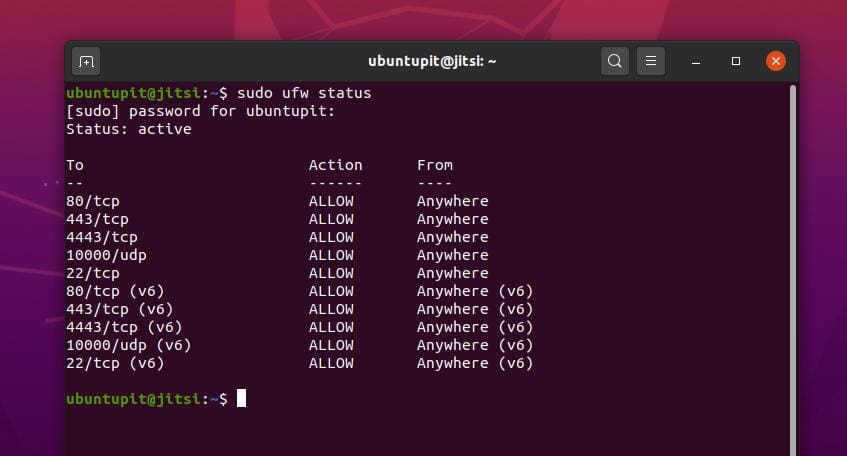

- #UBUNTU JITSI MEET INSTALL INSTALL#
- #UBUNTU JITSI MEET INSTALL UPDATE#
- #UBUNTU JITSI MEET INSTALL UPGRADE#
For that, execute the following commands:
#UBUNTU JITSI MEET INSTALL INSTALL#
To better serve Jitsi Meet, the user needs to install an Nginx web server before actually installing Jitsi Meet. $ echo "JAVA_HOME=$(readlink -f /usr/bin/java | sed "s:bin/java::")" | sudo tee -a /etc/profile In addition to that, users can set up the JAVA_HOME environment variable by executing the following commands: OpenJDK 64-Bit Server VM (build 25.171-b11, mixed mode) The output of the above command should look similar to the following: $ sudo apt install -y openjdk-8-jre-headlessĪfter the installation of Java Runtime Environment, execute the following command to verify the installation: To install the same, execute the following commands: Jitsi Meet requires GNU Privacy Guard and Java Runtime Environment to run without any disturbance. Since Vultr is not responsible for the modification, use the UP arrow to highlight the install the package maintainer’s version option, and then press the ENTER key.Īfter the system reboot, log in to the system as the same sudo user to continue the installation.
#UBUNTU JITSI MEET INSTALL UPGRADE#
$ sudo apt upgrade -y & sudo shutdown -r nowĪfter the update, inform the users that the currently installed version of the grub configuration file has been locally modified during the system upgrade.
#UBUNTU JITSI MEET INSTALL UPDATE#
Proceed with operation (y|n)? ” prompt, enter y and then press the ENTER key.įor performance and security purposes, it’s necessary to update the Ubuntu 18.04 LTS system to the latest status. When we see the “ Command may disrupt existing ssh connections. $ sudo sed -i 's/^127.0.1.1.*$/127.0.1.1 jitsimeet/g' /etc/hostsĮxecute either one of the following commands to confirm the domain name set up results.Īs suggested by Jitsi Meet, users need to allow HTTP, HTTPS traffic, OpenSSH, and inbound UDP traffic on port 10000 through port 20000 by executing the following commands: $ sudo hostnamectl set-hostname jitsimeet

Execute the following commands to set up a hostname, jitsimeet, and an FQDN,, for the Vultr system: Users need to correctly set up a hostname and an FQDN for the machine before enabling HTTPS security by deploying a Let’s Encrypt HTTPS certificate. > Note: The swap partition size will vary if the user uses a different server size. $ echo '/swapfile none swap sw 0 0' | sudo tee -a /etc/fstab $ sudo dd if=/dev/zero of=/swapfile count=2048 bs=1M

To set up a swap partition, execute the following commands: > Note: When deploying on the user’s server instance, ensure to replace all test values with the user’s actual values.įor a system with 2 GB of memory, it is recommended to set up a 2 GB (2048 MB) swap partition to improve system performance.

Vultr also offers a user-friendly dashboard with a very reasonable price tag compared to its competitors. Vultr fascinates users with 100% SSD storage, One-click deployment, and fully automated and dedicated servers. It provides an advanced cloud platform to deliver hosting services and cloud infrastructure for businesses and developers. Vultr offers cloud servers with elastic SSD storage for all their customers.


 0 kommentar(er)
0 kommentar(er)
